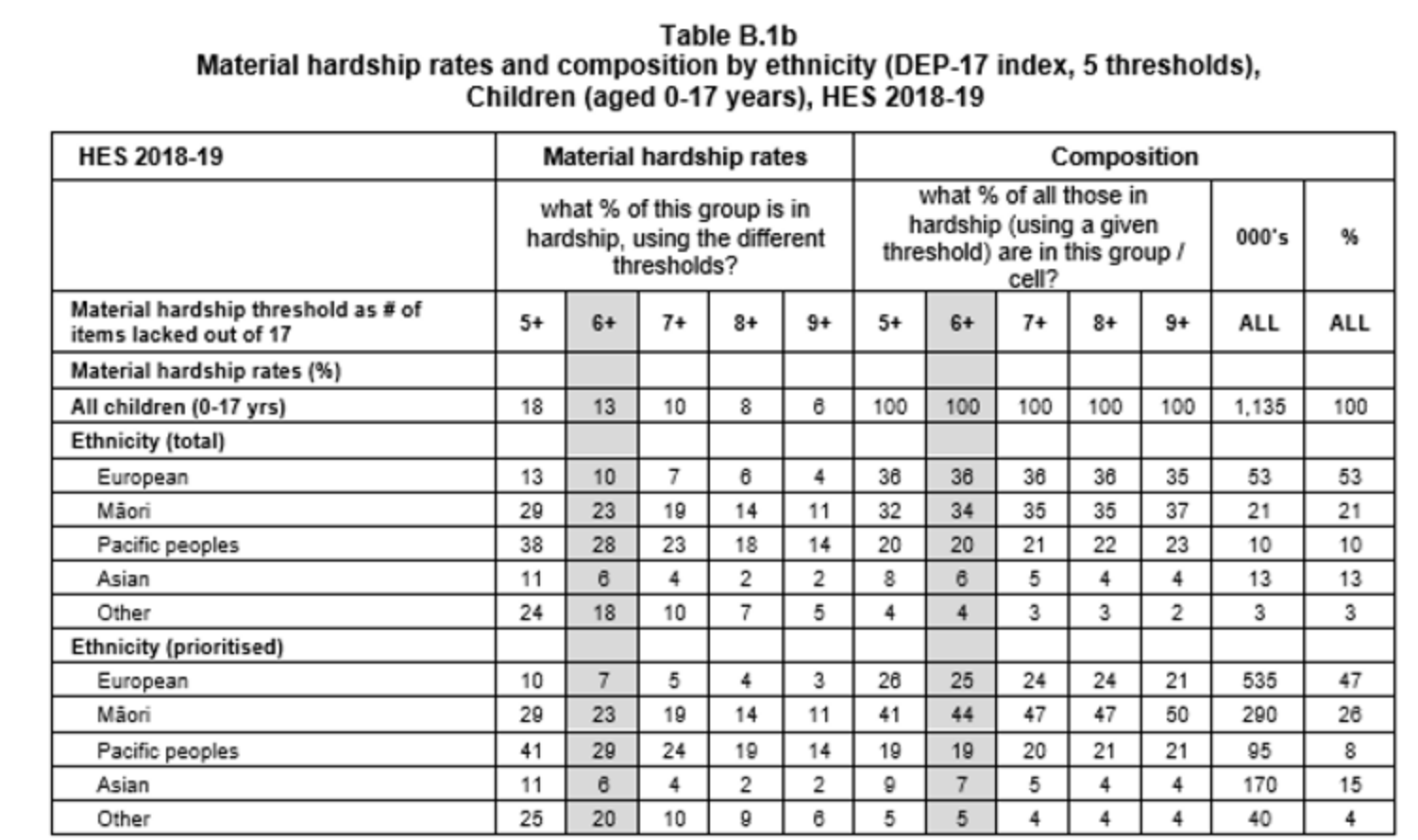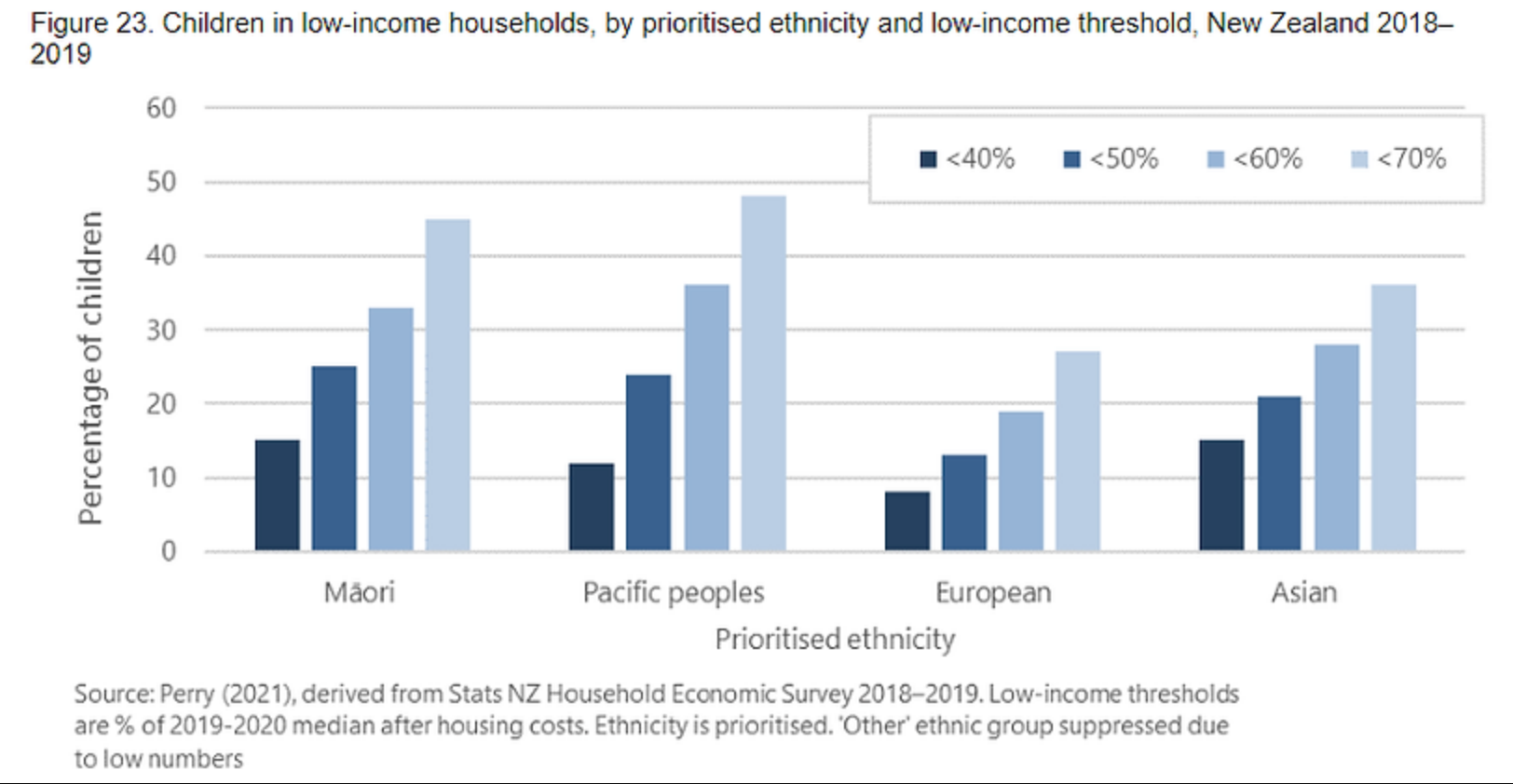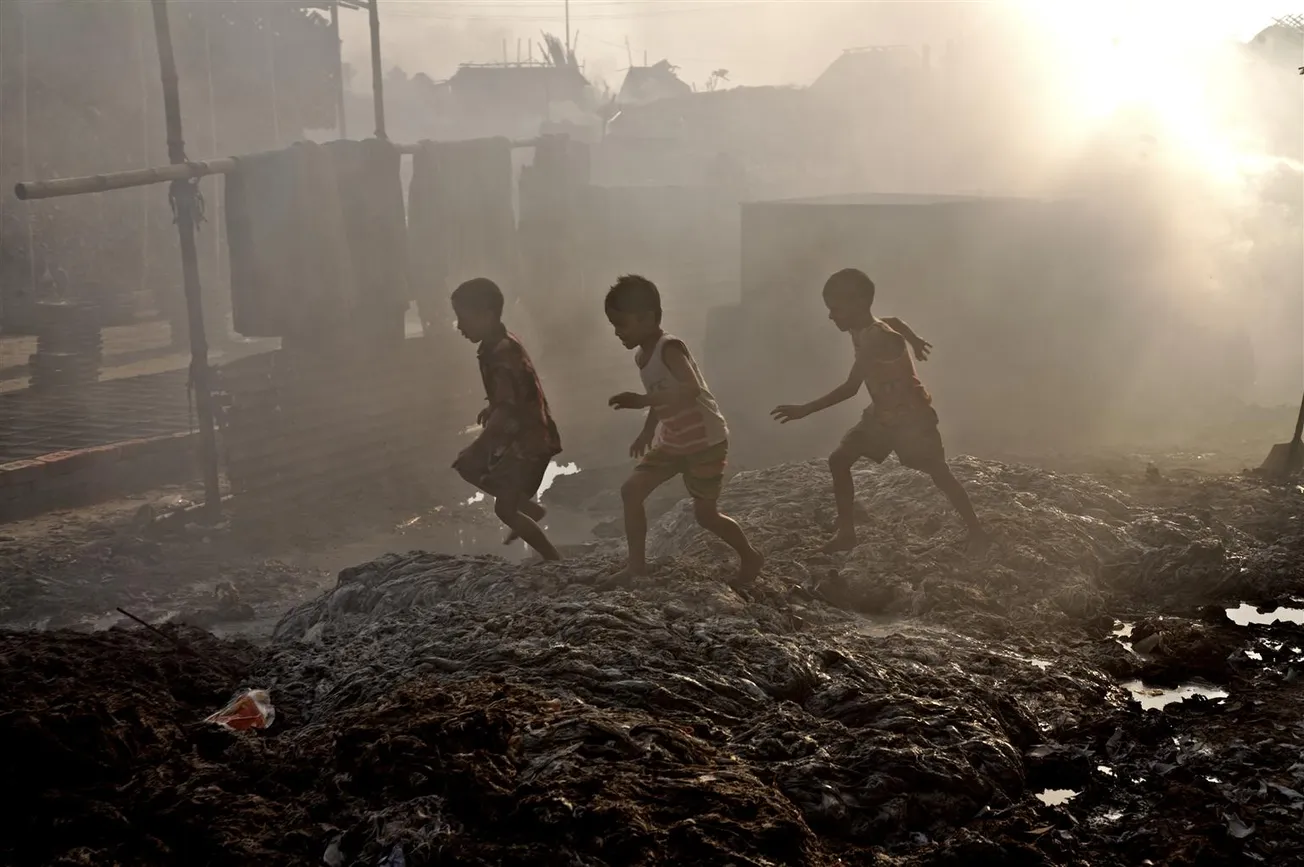Table of Contents
Lindsay Mitchell
lindsaymitchell.blogspot.com
Lindsay Mitchell has been researching and commenting on welfare since 2001. Many of her articles have been published in mainstream media and she has appeared on radio, TV and before select committees discussing issues relating to welfare. Lindsay is also an artist who works under commission and exhibits at Wellington, New Zealand, galleries.
A just-published Listener article asks, “Why doesn’t middle-class NZ care about child poverty?” It gathers views from half a dozen people including a principal, a teacher, an advocate against child poverty, a charity head, a Maori provider chair and Pasifika social worker. Apparently, they told the Listener that the middle-class has become indifferent to child poverty. Yet a careful reading of the piece finds it is primarily the Child Poverty Action Group advancing the idea that, “For middle white New Zealand, poverty is equated with being brown. This is where the indifference comes from.” The chief executive of the Auckland City Mission goes further, claiming active hostility to solo mothers, especially Maori: “As a society, the narrative is ‘how dare you raise a child alone? We are going to make it as hard for you as we can – we will punish you.’ And secondly, in our country, poverty has a colour. It is about racism and colonization.”
In fact, there are more NZ European children in material hardship than all other ethnicities put together. The table below shows there are 53,000 NZ European compared to a total of 47,000 combined other ethnicities (these are the most recent data reported in June 2021):

So poverty doesn’t have a colour. Saying poverty has a colour is a convenience for those who want to blame racism and colonisation.
The next thing of note from the above chart is that Asian children have relatively low rates of material hardship. Is this due to higher incomes? No.
The following chart shows that the percentage of Asian children in the poorest households is on par with Maori at 15 per cent:

So low household income does not have a direct relationship with material hardship. How money is budgeted and what it is spent on matters. Asian families are also more likely to derive their income from work. The Ministry of Social Development long ago established that, “Standard of living data show that poor children reliant on government transfers are more likely to be subject to restrictions in key items of consumption than are poor children in families with market income.”
And yet both the head of the Auckland City Mission and convenor for the Child Poverty Action Group call for more government transfers. The former wants anyone raising children to receive in-work tax credits and the latter wants more tax from the “richest 10 per cent” to fund a universal child benefit (oddly missing that a universal child benefit would go to the children of the richest 10 per cent).
The social worker from South Auckland would like to see the recommendations of the Welfare Expert Advisory Group established four years ago implemented. Either he or the writer of the piece claims a review “found that the government had made no progress on implementing the report’s 42 key objectives”.
That is totally incorrect. For instance, sanctions for not naming the other parent were removed; the ‘subsequent child work obligation’ was abolished: the child support pass-on is implemented; benefits and abatement thresholds were increased; benefits were indexed to wage inflation and accommodation supplements were raised. (This is not an exhaustive list.)
The social worker who wants the recommendations implemented then goes on to argue that “Accommodation supplements hide the fact that rents are too high, so essentially the government is pouring money into private rentals.” High rents are at least partially a result of the government imposing unrealistic housing standards and scrapping tax deductibility, policies he would doubtless approve of.
This disconnect with economic reality characterises suggestions made when those “who see deprivation up close on a daily basis” are asked for their solutions to child poverty. Despite decades of redistributing wealth, the problem persists. Perhaps the prescription is wrong.
If the diagnosis is wrong, it probably is.
If the chief executive of the Auckland City Mission stopped for a moment blaming “society” for the poverty of sole-parent children and instead reflected on where their fathers are, and why they are absent, a real remedy might reveal itself. Perhaps replacing fathers with the DPB all those years ago wasn’t such a good idea after all?
If the Maori provider chair stopped insisting that child poverty is the “product of colonisation” and reflected on why the children of low-income Asian parents do not suffer disproportionate material deprivation, a real remedy might reveal itself. Perhaps the strong work ethic that typifies immigrants to this country could be celebrated and emulated?
And if indeed the middle-class has become “indifferent to child poverty” perhaps it is because they can see through the many excuses for why it exists.









